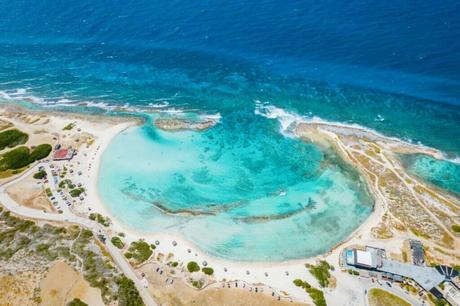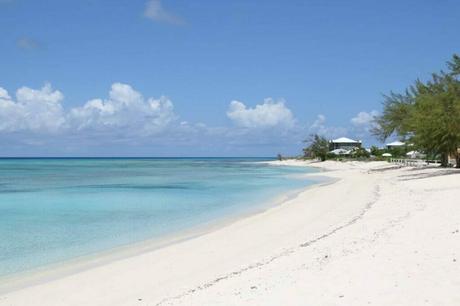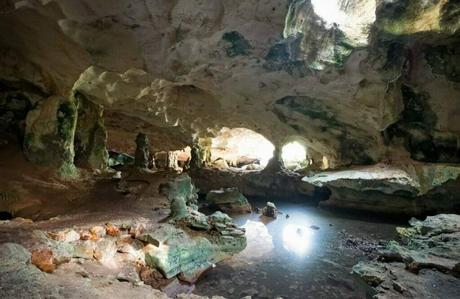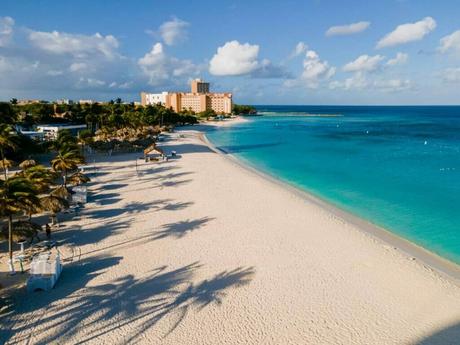Aruba and Turks Islands may both be Caribbean destinations, but each has its own unique charm and character.
Aruba, with its dry and arid landscapes, offers breathtaking white sand beaches and unforgettable sunsets. On the other hand, the Turks Islands boast a tropical savannah climate, stunning underwater attractions, and a rich Afro-Caribbean culture. Whether you’re seeking adventure or relaxation, both destinations have something to offer.
LocationCaribbeanCaribbean
GeographyIslandArchipelago
LanguageDutch, PapiamentoEnglish
GovernmentParliamentary democracyBritish Overseas Territory
CurrencyAruban florin (AWG)United States dollar (USD)
TourismMajor tourist destinationPopular tourist destination
EconomyTourism, oil refiningTourism, offshore finance
CultureBlend of Dutch and CaribbeanBlend of British and Caribbean
AttractionsPalm Beach, Natural PoolGrace Bay, Grand Turk Lighthouse
ClimateTropicalTropical
From exploring national parks and indulging in water sports to immersing yourself in the local heritage and enjoying warm hospitality, Aruba and Turks Islands have it all. So, pack your bags and get ready for an unforgettable vacation in these captivating Caribbean paradises!
Geography and Location: Exploring the Unique Features of Aruba and Turks Islands

Aruba, a gem of the Dutch Caribbean, is located just north of Venezuela. Its geography is characterized by dry, arid landscapes and a flat, riverless terrain, adorned with cacti and divi-divi trees. Despite its small size, about 70 square miles, Aruba boasts miles of stunning white sand beaches, such as the famous Eagle Beach, Palm Beach and Baby Beach.
On the other hand, the Turks Islands are part of the larger Turks and Caicos archipelago, which is nestled in the Atlantic Ocean, southeast of the Bahamas. The islands are known for their exceptional natural beauty with long stretches of pristine beaches, like Grace Bay Beach, and vibrant coral reefs. The Turks Islands are smaller in land area compared to Aruba, but with a total of 40 islands and cays in the Turks and Caicos archipelago, the opportunities for exploration are immense.
In Aruba, the lack of mountains and hills provide for unique views of uninterrupted horizon, which create picture-perfect sunsets. Coupled with the constantly blowing trade winds, it has a unique charm not found in many other Caribbean islands.
Turks Islands, meanwhile, feature varied landscapes with salt pans and marshes, coupled with extensive wetlands and marine ecosystems, thanks to their location in the Lucayan Archipelago. Their geographical diversity provides a home to a rich array of flora and fauna, including various endemic and endangered species.
Climate and Natural Beauty: Contrasting the Tropical Charms of Aruba and Turks Islands

Aruba’s climate is tropical but dry, with an average temperature hovering around 82 degrees Fahrenheit. Its beautiful weather is consistent year-round, largely spared from hurricanes due to its location outside the hurricane belt. Aruba’s natural beauty is defined by its clear turquoise waters, extensive coral reefs ideal for snorkeling and scuba diving, and rugged landscapes dotted with cacti.
On the other hand, the Turks Islands enjoy a tropical savannah climate. Their weather is warmer and slightly more humid than Aruba, with temperatures generally ranging from 85 to 90 degrees Fahrenheit. Like Aruba, Turks Islands also boast stunning beaches, but what sets them apart are their breathtaking underwater attractions such as the third-largest coral reef system in the world.
Aruba’s Arikok National Park is a must-visit for nature lovers. It covers almost one-fifth of the island and hosts unique geological formations, caves with indigenous Arawak drawings, and numerous local species. Aruba’s beauty is a contrast of rocky desert inland and gorgeous coastline, providing a stunning and diverse visual feast.
In the Turks Islands, the beauty lies beneath the waves. There’s an exceptional array of sea life to be discovered while diving or snorkeling, including sea turtles, exotic fish, and stunning coral formations. The islands also feature unique limestone caves and wetlands that serve as important habitats for migratory birds, offering another dimension to their natural appeal.
Cultural Delights: Discovering the Rich Heritage and Traditions of Aruba and Turks Islands

Aruba’s cultural mosaic is influenced by more than 90 nationalities. This Dutch island still retains a strong Dutch influence, which is evident in its pastel-colored, Dutch colonial architecture. Not to be overlooked is the local language, Papiamento, a fascinating creole language combining elements of Dutch, Spanish, and Portuguese. The Bon Bini Festival held every Tuesday night in the capital city, Oranjestad, is an excellent way to experience Aruban music, dance, and cuisine.
Turks Islands, on the other hand, have a predominantly Afro-Caribbean culture with a rich history linked to the Lucayan Indians, European colonizers, and African slaves. Their cultural traditions are well preserved and showcased in their annual events such as the Turks and Caicos Conch Festival and the Maskanoo street festival held every Boxing Day. Their music and dance, deeply rooted in African rhythms, are mesmerizing and infectious.
In Aruba, you can visit the National Archaeological Museum to delve into the island’s Amerindian heritage, and enjoy a traditional Aruban meal at a local restaurant. Or, you could explore the charming neighborhoods of San Nicolas, known as the cultural capital of Aruba, featuring vibrant street art and a rich history.
For a cultural tour in the Turks Islands, a visit to the Turks and Caicos National Museum on Grand Turk Island and the Conch Bar Caves on Middle Caicos would be enriching. These offer insights into the islands’ Pre-Columbian Lucayan culture and the history of the Bermudian salt collectors, giving you a well-rounded understanding of the islands’ cultural evolution.
Tourist Attractions and Activities: Unveiling the Must-See Destinations and Experiences in Aruba and Turks Islands

Aruba is brimming with attractions for every kind of traveler. Adventure enthusiasts can explore the rugged terrains of Arikok National Park or dive into the vibrant marine life of the Antilla shipwreck. For relaxation, one can laze around the pristine beaches or indulge in a rejuvenating spa treatment using local aloe vera.
Turks Islands offer equally enthralling attractions. Water sports are the main draw, with world-class diving and snorkeling, fishing, and sailing. For those who prefer land, they can explore the historical sites in Cockburn Town, the quaint capital of the Turks and Caicos, or enjoy bird watching at the salt ponds and wetlands.
Aruba also offers a unique experience of exploring its windward coast on a horse or on an ATV, or even windsurfing and kitesurfing due to its constant trade winds. History buffs can also visit the California Lighthouse, named after the S.S. California which sank before it was built.
While in Turks Islands, the must-do activities include whale watching in the winter months, exploring the stunning underwater world of Columbus Landfall Marine National Park, and kiteboarding in the crystal-clear waters of Long Bay Beach.
Accommodation and Hospitality: Comparing the Accommodation Options and Hospitality Services in Aruba and Turks Islands

Aruba’s accommodation options cater to all kinds of travelers – from luxury beachfront resorts in Palm Beach, eco-friendly boutique hotels, to budget-friendly guesthouses. Aruban hospitality is warm and welcoming, with a motto of ‘Bon Bini‘ or ‘Welcome‘, truly reflecting in their services.
Turks Islands offer luxurious resort living, particularly on Providenciales, which is home to many high-end resorts. There’s also the option of private villas and smaller boutique hotels for a more intimate feel. The hospitality in Turks and Caicos is second to none, with a friendly, laid-back vibe that makes visitors feel right at home.
In Aruba, hospitality extends beyond hotels. The island’s restaurants are known for their exceptional service, and there are numerous tours and excursions that cater to all interests. You can even participate in a cooking class and learn to prepare traditional Aruban dishes.
Turks Islands, in contrast, offer a more relaxed pace. The islands are renowned for their culinary scene, which revolves around fresh seafood, particularly conch and lobster. Hospitality also extends to guided tours of the islands’ natural and historical sites, ensuring visitors get the most out of their stay.
Travel Tips and Practicalities: Essential Information for Planning a Trip to Aruba or Turks Islands

For Aruba, U.S. citizens don’t require a visa for stays up to 180 days but need to have a U.S. passport that is valid upon entry. The official currency is the Aruban Florin, but U.S. dollars are widely accepted. While English is commonly spoken, learning a few words of Papiamento can enhance your cultural experience.
For travel to Turks Islands, U.S. citizens require a passport that is valid for the duration of their stay. The official currency is the U.S. dollar. English is the official language, making communication easy for American travelers. It’s also a British Overseas Territory, and driving is on the left-hand side.
Aruba’s safety standards are high, with the island often ranked as one of the safest in the Caribbean. However, as with any travel destination, basic safety precautions should be taken. The tap water in Aruba is safe to drink, having been distilled in the world’s second-largest desalination plant.
In Turks Islands, crime rates are relatively low, but it’s always important to be aware of your surroundings and secure your belongings. Tap water in most areas is safe to drink, but bottled water is recommended for those with sensitive stomachs. Remember to apply plenty of sunscreens and protect against potential mosquito bites.
FAQ

Which island is better, Aruba or Turks?
Both Aruba and Turks have their unique qualities, making it difficult to determine which one is better. Aruba is known for its dry and arid landscapes, stunning white sand beaches, and picture-perfect sunsets. On the other hand, Turks offers a tropical savannah climate, exceptional underwater attractions, and a rich Afro-Caribbean culture. The choice ultimately depends on individual preferences, whether one seeks Aruba’s arid beauty or Turks’ vibrant marine life and cultural heritage.
Are there mosquitoes in Turks?
Mosquitoes can be found in Turks, as is the case in many tropical and subtropical regions. However, the presence and activity of mosquitoes can vary depending on factors such as time of year, weather conditions, and location. It is advisable to take precautionary measures, such as using mosquito repellent and wearing protective clothing, particularly during dawn and dusk when mosquitoes are most active.

